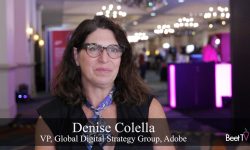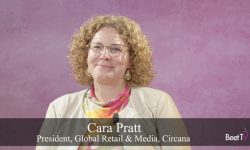MadHive is valued at almost $1 billion after receiving a $300 million private equity investment from Goldman Sachs to accelerate its connected TV advertising platform.
The company, which had only raised $7 million previously, is aiming to help broadcasters move off an “antiquated” software stack for ad sales and delivery.
In this video interview with Beet.TV, Spencer Potts, president, MadHive, explains how the company will use the new money.
Humble unicorn
“We’re certainly humbled by the $300 million commitment,” Potts says. “MadHive is approaching a $1 billion dollar valuation. So that was a very meaningful conversation to us, to have them really trust us to run the business in full and be a partner that could sit on our board and could offer resources.
“They have value accelerator-type businesses within Goldman. They have an entire bench of really seasoned executives. They’ve made all those investments. … They’re trying to … 3 to 5x their money in the next five years.”
That is a big vote of confidence in the outlook for connected TV advertising, and for MadHive. Here is today’s press release.
According to eMarketer’s latest forecast, US connected TV (CTV) ad spending will near $30 billion in 2024.
Back in 2021, MadHive said its revenue was growing 100% year-on-year.
Talking tech
MadHive is a video-focused DSP. It works with broadcast groups to enable their salespeople to visit, plan, buy and measure across linear and IP-delivered TV, amongst other channels.
It offers a programmatic platform for all parts of the ecosystem buyers, sellers and data partners – including supporting planning, buying, measurement and AI-based optimization.
Customers include Fox, Hearst, Scripps and TEGNA’s Premion. Potts says the company provides “infrastructure tech for connected television”.
Expansion and growth
Goldman Sachs has previously invested in the space, in iSpot.tv, HUMAN, GumGum and Innovid.
Potts says MadHive aims to grow customers beyond the broadcast space, including in the direct-to-consumer area, plus in national markets.
He gives an example where a national brand targeting specific zip codes in Boston could easily expand its reach to other locations such as St. Louis, effectively localizing national campaigns.
“There’s a world where you could actually get a local result and, almost in real-time, move your budget around nationally to get higher outcomes for lower expenses.”














































